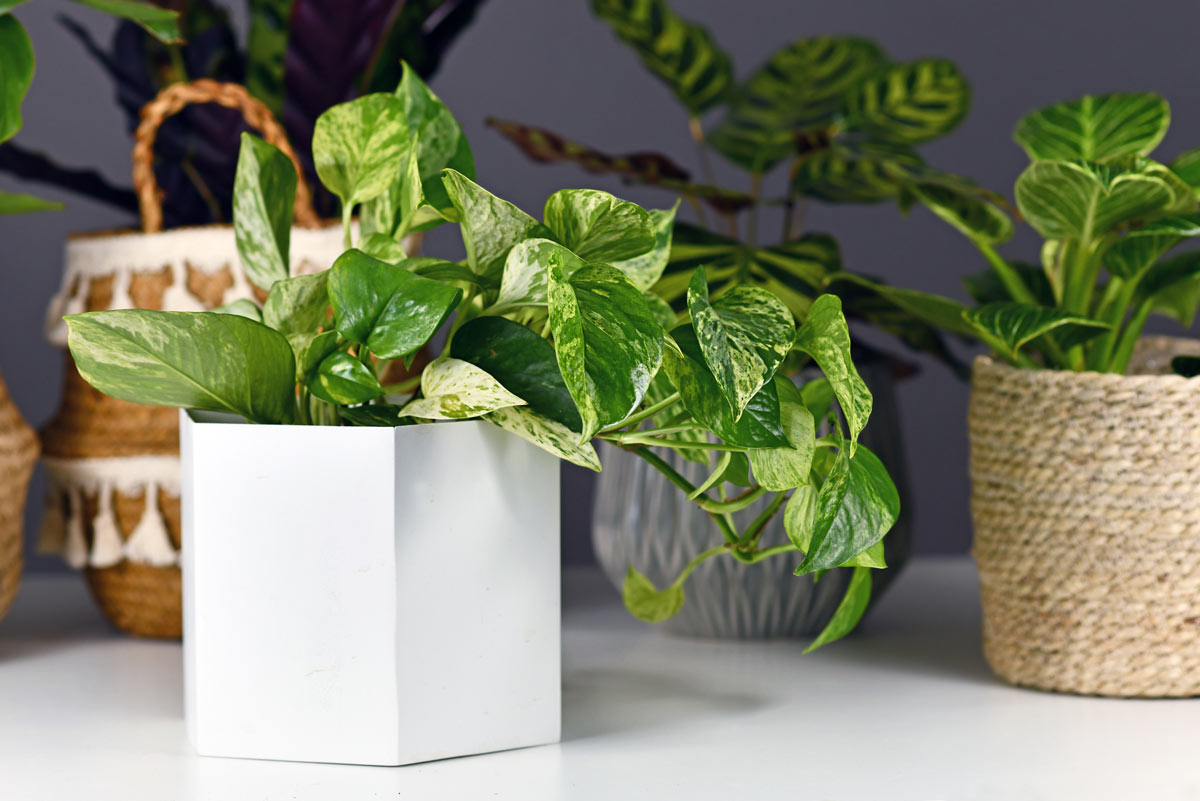Explore the Special Advantages of Low-Light Indoor Plants for Your Living Space
Including low-light interior plants into your space uses a wide range of benefits that prolong much beyond mere aesthetic appeals. These hardy plants not only prosper in environments with restricted sunshine yet likewise offer critical functions such as air filtration and humidity improvement. Moreover, they can favorably influence your state of mind and general health while needing marginal maintenance. As you consider the transformative potential of these plants, it ends up being vital to discover just how their distinct qualities can customize your environment to better serve your way of living. What particular advantages might reverberate most with your personal area?
Air Purification Benefits
Low-light interior plants not only improve the visual allure of living rooms but likewise play a substantial role in air filtration. Research study has actually demonstrated that certain plant species can successfully get rid of usual interior toxins, including trichloroethylene, benzene, and formaldehyde. These substances frequently emanate from home products such as furnishings, cleaning items, and structure products, contributing to indoor air quality concerns.
Plants such as the serpent plant, pothos, and tranquility lily are specifically experienced at filtering hazardous compounds from the air while thriving in low-light conditions. The procedure of phytoremediation, in which plants absorb and metabolize toxins, allows these varieties to contribute substantially to a much healthier indoor atmosphere. In addition, through photosynthesis, plants release oxygen, additionally enhancing air top quality.
Incorporating low-light indoor plants right into home or office rooms not only provides visual benefits yet likewise functions as a practical technique for improving air top quality. By selecting the right types, individuals can develop an environment that promotes health and decreases exposure to hazardous pollutants, making these plants a necessary component in modern-day interior living.
:max_bytes(150000):strip_icc()/low-light-plants-GettyImages-1360510675-50ad3d1ad95942ecaed5e4cee84f7572.jpg)
Mood Enhancement Effects
Various research studies have shown that incorporating indoor plants can considerably improve state of mind and general mental wellness. The existence of greenery in indoor atmospheres has actually been connected to reduced anxiety degrees, raised sensations of peace, and improved psychological health. Low-light indoor plants, particularly, flourish in atmospheres where natural light is limited, making them ideal for different living rooms.
Research suggests that engaging with plants can promote the release of serotonin, a natural chemical related to sensations of joy and health. In addition, the act of caring for plants promotes a sense of duty and success, more adding to positive psychological health outcomes. Moreover, low-light plants such as snake plants, pothos, and peace lilies have been revealed to improve air high quality, which is intrinsically linked to mood enhancement.
Incorporating these plants into your home or office can create a serene ambience, using a aesthetic and sensory retreat from the pressure of daily life - Best low-light indoor plants. As people invest boosting amounts of time indoors, the mood-enhancing impacts of low-light indoor plants become also extra important, supplying not only visual appeal however likewise an extensive effect on emotional health
Reduced Upkeep Requirements
For those looking for to improve their indoor areas without a considerable time commitment, low-light interior plants are an optimal choice as a result of their low maintenance requirements. These resilient plants prosper in less-than-ideal illumination conditions, making them perfect for homes and workplaces where all-natural sunlight is limited.

Pest resistance is an additional advantage of low-light interior plants. Lots of selections are much less at risk to usual parasites, decreasing the need for continuous tracking and intervention. These plants typically expand much more slowly than their high-light counterparts, implying much less frequent repotting and trimming are required.
Visual Allure and Adaptability

Additionally, these plants can be organized in myriad ways, whether in groups for a lavish result or as standalone attributes to attract the eye. The options of planter styles-- from smooth ceramic pots to rustic wooden containers-- additionally enhance their aesthetic worth, permitting home owners to share their individual design.
Moreover, low-light plants can be tactically put in areas that might or else really feel ignored, such as corners or dimly lit racks, therefore optimizing their ornamental potential. Inevitably, the mix of their striking appearance and adaptability makes low-light indoor plants a valuable enhancement to any kind of living space, producing an inviting ambience that promotes well-being and leisure.
Improved Moisture Degrees
Enhancing indoor moisture levels is just one of the considerable benefits of integrating low-light indoor plants right into living areas. These plants naturally launch moisture vapor with a process called transpiration, which occurs when water taken in by the roots relocates through the plant and vaporizes from the leaves. This procedure not only raises humidity yet likewise contributes to a healthier indoor atmosphere.
Enhanced humidity degrees can relieve numerous wellness problems, such as dry skin, respiratory system issues, and allergies. Numerous people experience discomfort in dry indoor problems, particularly throughout cold weather when heating unit are in usage. By tactically placing low-light plants throughout your home, you can produce an extra balanced humidity degree that promotes total well-being.
Moreover, certain low-light indoor plants, like peace lilies and spider plants, are particularly efficient at raising moisture (Best low-light indoor plants). Thus, low-light indoor plants serve both practical and visual functions, promoting a healthier atmosphere.
Final Thought
In recap, low-light indoor plants use numerous advantages that add to a much healthier and a lot more inviting living space. Their ability to detoxify the air, boost state of mind, and enhance humidity levels highlights their value as efficient style components. Additionally, their low maintenance needs and visual convenience make them appropriate for various settings. Integrating these resistant plants into interior settings not only boosts the atmosphere yet also advertises overall wellness, developing a relaxing sanctuary for citizens.
Plants such as the snake plant, pothos, and tranquility lily are specifically adept at filtering system damaging substances from the air while growing in low-light conditions. Low-light plants such as serpent plants, pothos, and tranquility lilies have been shown to boost air quality, which is fundamentally connected to mood enhancement.
Low-light interior plants, such as serpent plants, pothos, and ZZ plants, not only improve the look at this now aesthetic landscape of a room yet also introduce various textures and shades of green that can complement diverse interior styles. These plants normally launch moisture vapor via a procedure recognized as transpiration, which takes place when water soaked up by the origins relocates with the plant and view it now vaporizes from the fallen leaves.Additionally, particular low-light interior plants, like tranquility lilies and spider plants, are particularly effective at boosting humidity.
 Dylan and Cole Sprouse Then & Now!
Dylan and Cole Sprouse Then & Now! Romeo Miller Then & Now!
Romeo Miller Then & Now! Kenan Thompson Then & Now!
Kenan Thompson Then & Now! Meadow Walker Then & Now!
Meadow Walker Then & Now! Peter Billingsley Then & Now!
Peter Billingsley Then & Now!